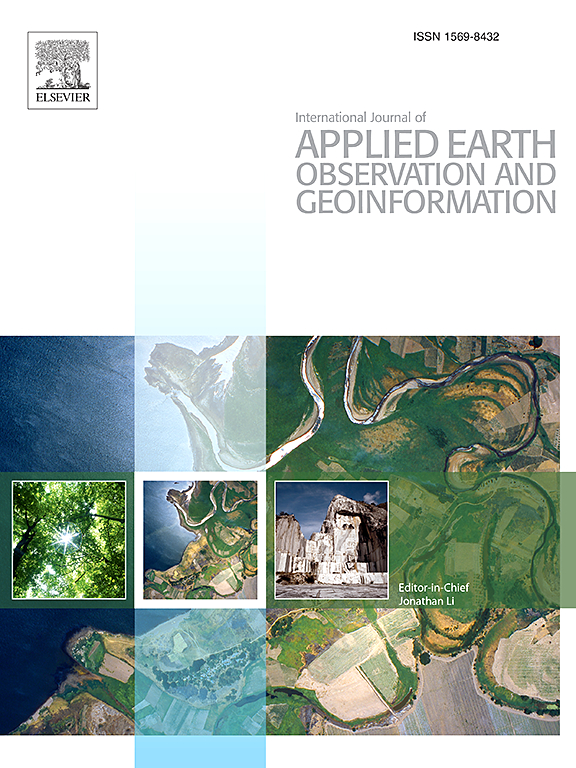Extraction of gully erosion using multi-level random forest model based on object-based image analysis
IF 7.6
Q1 REMOTE SENSING
International journal of applied earth observation and geoinformation : ITC journal
Pub Date : 2025-02-18
DOI:10.1016/j.jag.2025.104434
引用次数: 0
Abstract
Gully erosion cause soil organic matter loss, which poses a grave threat to food security and regional ecological sustainability. Remote sensing monitoring and information extraction of gully erosion are of great significance to protect cultivated land resources and agricultural production. To improve the extraction accuracy of gully erosion, multi-level random forest (RF) extraction model based on object-based image analysis (OBIA) is proposed to extract gully erosion information. The Gaofen-2 (GF-2) image was selected as the main data source, supplemented by topographic data, to segment the features in Dehui City based on multi-scale segmentation method. Fusing spectral, textural and geometric feature information, the RF Gini index (GI) was used for feature optimization. Gully erosion extraction based on feature classes was performed using multi-level RF model based on OBIA in the southwestern part of Dehui City, with an overall accuracy (OA) of 96.71% and a Kappa coefficient (Kappa) of 0.865. Compared with the single-level extraction results, the OA and Kappa were improved by 8.4% and 0.102, which indicated that this model has better performance and has certain application value for the research of gully erosion information extraction and dynamic monitoring.
求助全文
约1分钟内获得全文
求助全文
来源期刊

International journal of applied earth observation and geoinformation : ITC journal
Global and Planetary Change, Management, Monitoring, Policy and Law, Earth-Surface Processes, Computers in Earth Sciences
CiteScore
12.00
自引率
0.00%
发文量
0
审稿时长
77 days
期刊介绍:
The International Journal of Applied Earth Observation and Geoinformation publishes original papers that utilize earth observation data for natural resource and environmental inventory and management. These data primarily originate from remote sensing platforms, including satellites and aircraft, supplemented by surface and subsurface measurements. Addressing natural resources such as forests, agricultural land, soils, and water, as well as environmental concerns like biodiversity, land degradation, and hazards, the journal explores conceptual and data-driven approaches. It covers geoinformation themes like capturing, databasing, visualization, interpretation, data quality, and spatial uncertainty.
 求助内容:
求助内容: 应助结果提醒方式:
应助结果提醒方式:


